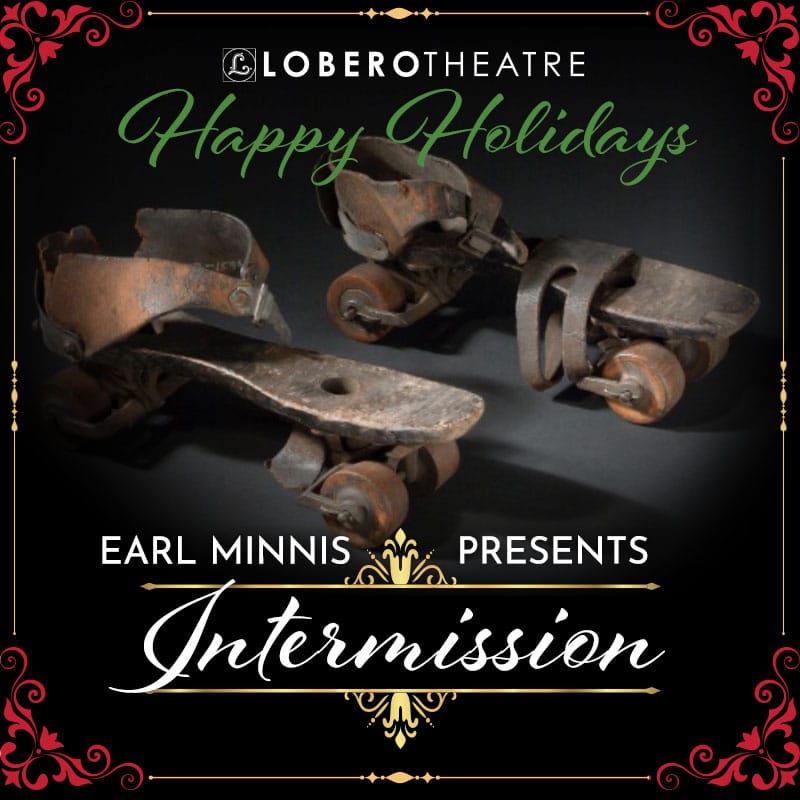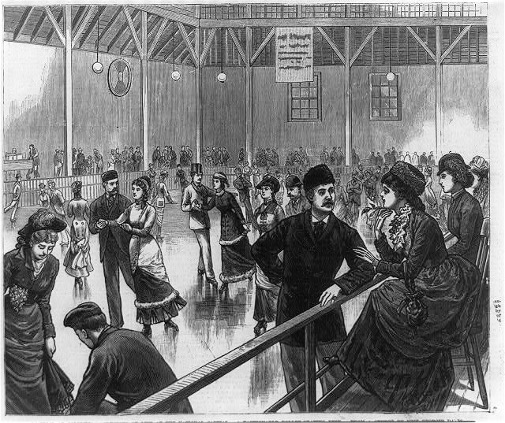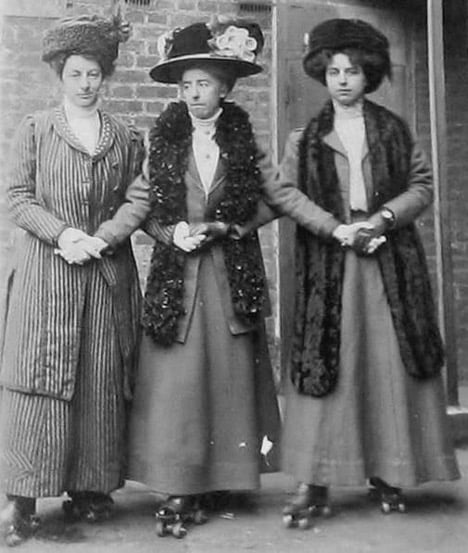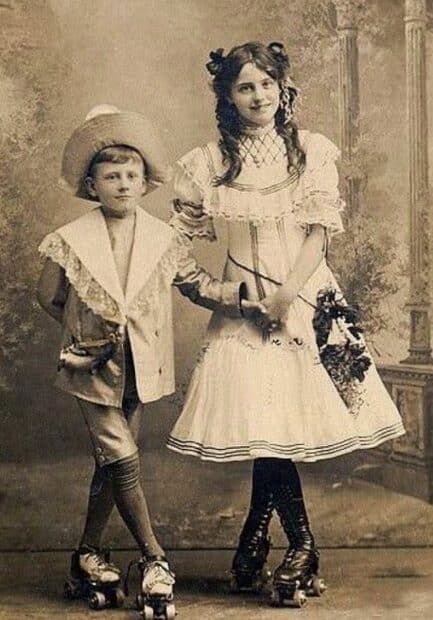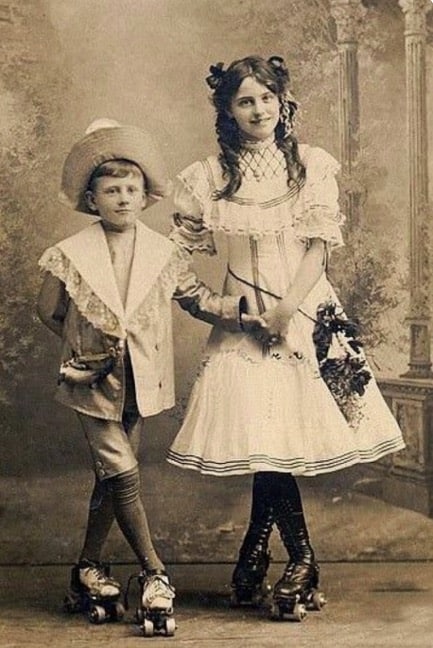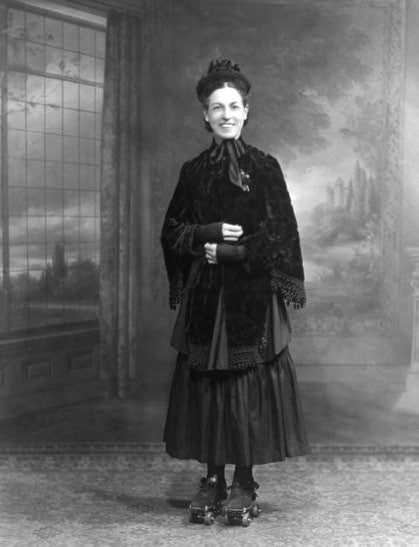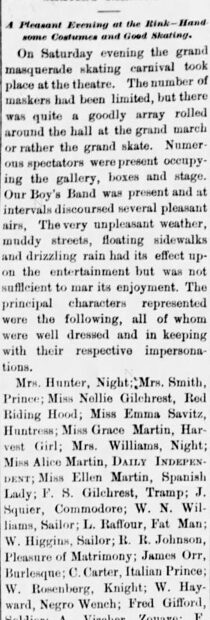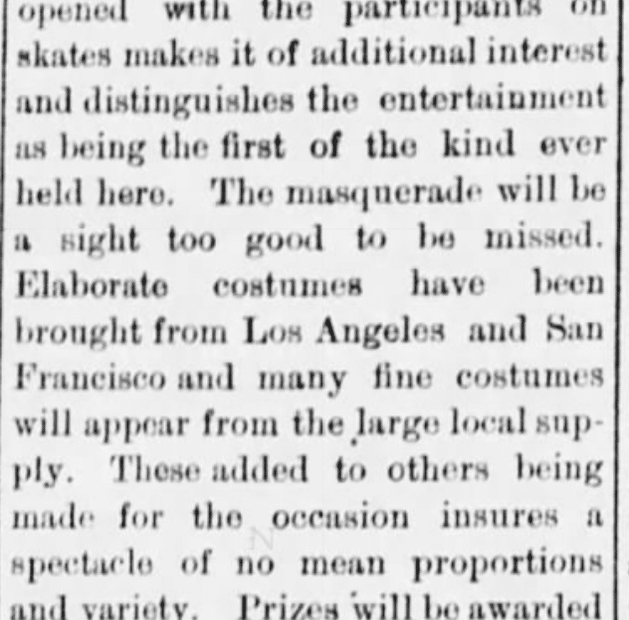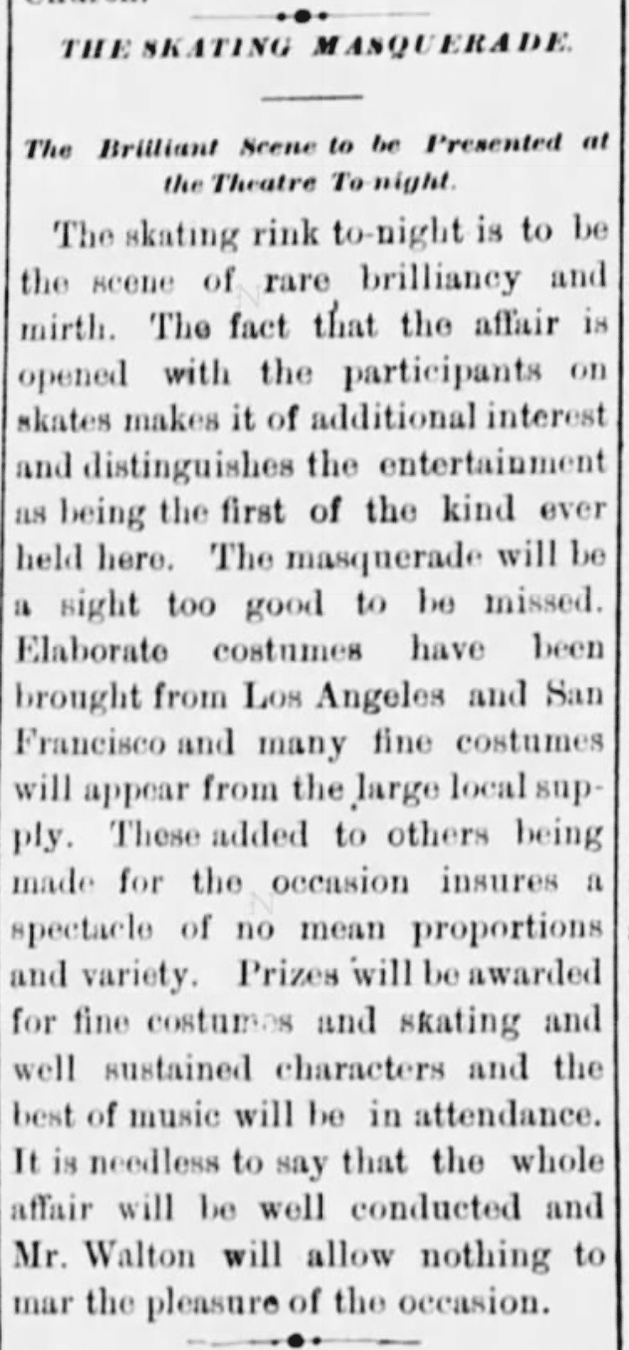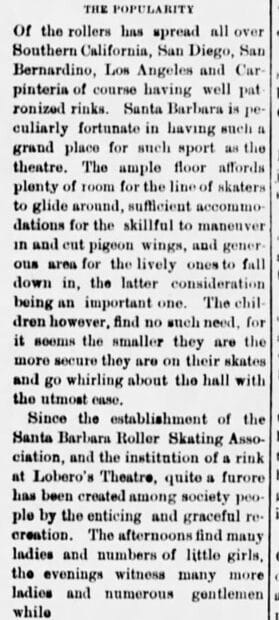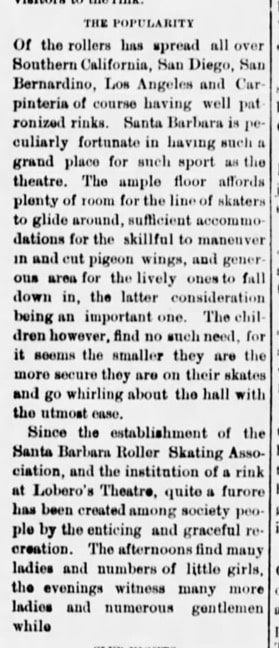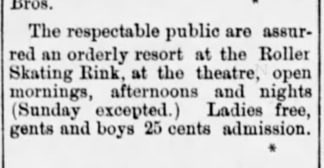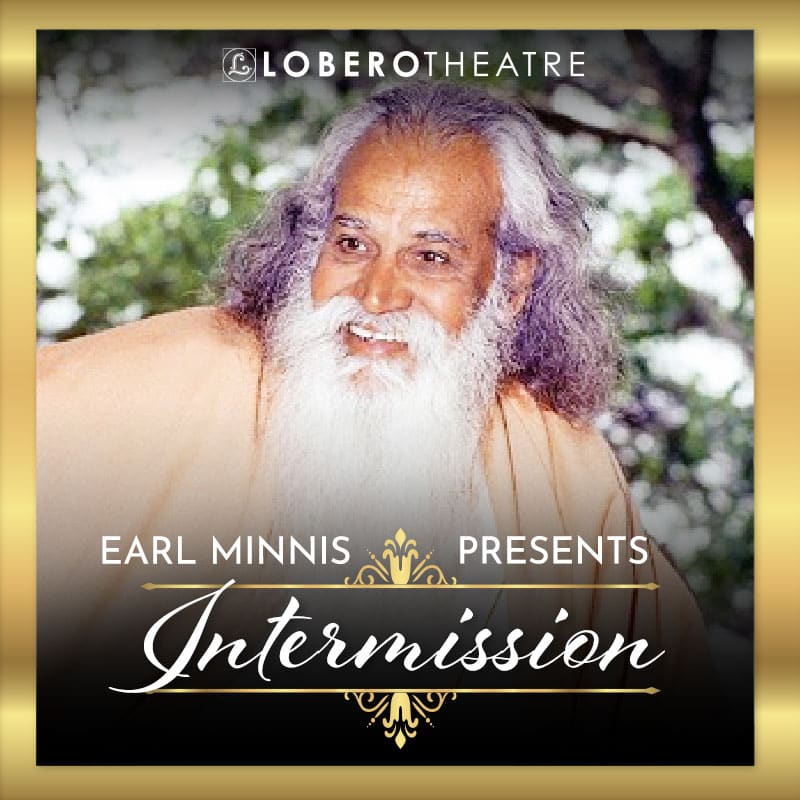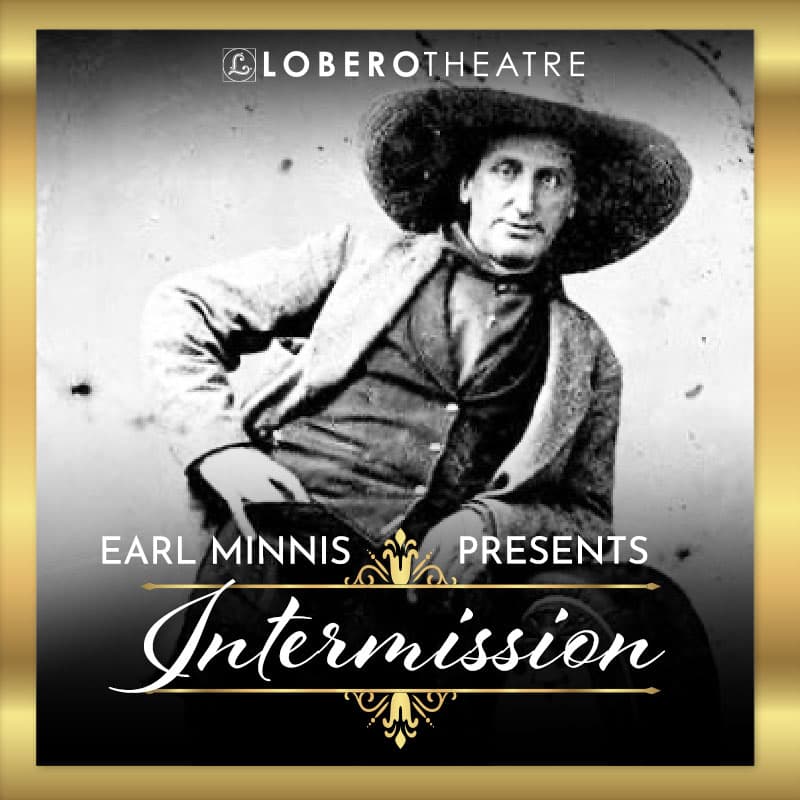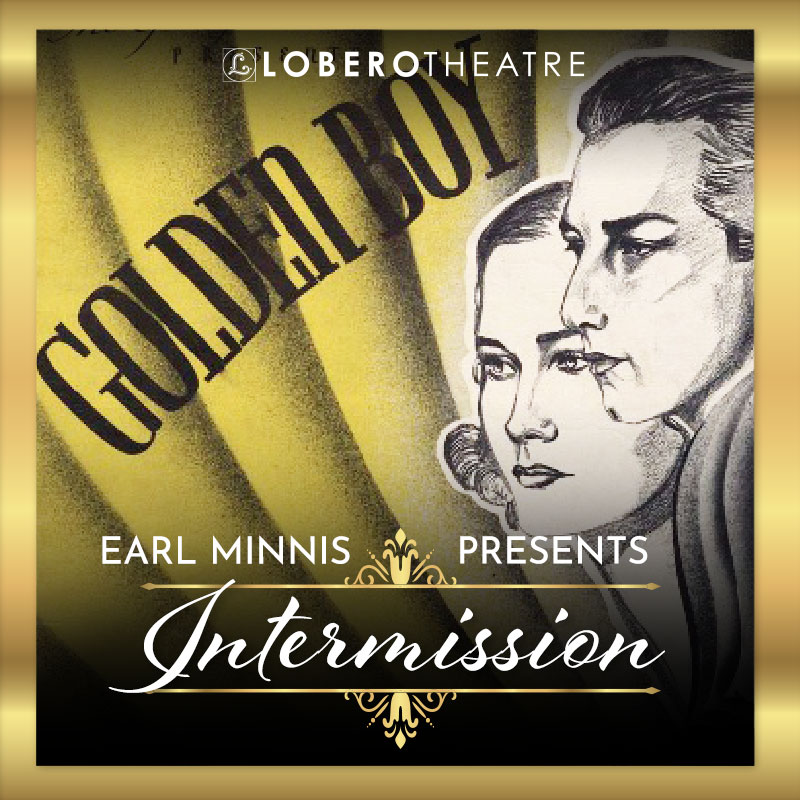It was the holiday season in Santa Barbara in 1883, and the town was in the throes of roller-skating mania.
The Lobero Opera House was skating-central, with wooden chairs removed to provide a large skating rink on the floor of the gas-lit, cavernous hall. Almost every night in December dozens of skaters would clatter around the Lobero on their wooden-wheeled skates, moving in accompaniment to the sounds of a brass band. Ladies were admitted at no charge, with boys and gents having to pay 25 cents.
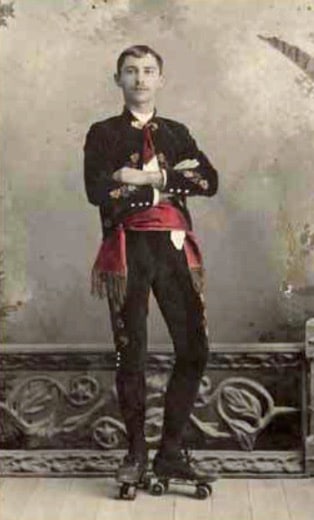
Surprisingly, roller skating was nothing new at the Lobero. On Saturday, December 16, 1871 – more than a year before the opera house’s official opening – the Santa Barbara Press wrote, “Lobero’s Theatre is to be opened soon as a skating rink. This is good news for young people. It will make a grand rink.”
Roller skates had existed for 100 years, but it wasn’t until American inventor James Plimpton patented a four-wheeled skate in 1863 that the average person had a fighting chance of surviving the sport. The earliest roller skates featured an inflexible row of 3 in-line wooden wheels which meant turning was only possible if the skater constantly lifted one of their feet. To make things worse, there was no easy way to stop.
In fact, the inauspicious debut of roller skates took place in 1760, when inventor John Joseph Martin entered a fancy London masquerade party on a pair of his new skates and while playing the violin. “When not having provided the means of retarding his velocity, or commanding its direction, he impelled himself against a mirror of more than five hundred pounds value, dashed it to atoms, broke his instrument to pieces, and wounded himself most severely.”
In contrast to Martin’s in-line skates, Plimpton’s quad skates included springy carriages called trucks which allowed the skater to turn by leaning in the direction of travel. For the first time, skaters could easily move next to each other in a circle, which made skating fun for couples and groups. A couple of years later, the toe stop was invented which allowed the skater to tip the skate onto the toe to stop.
Roller skating was marketed as being family-friendly, and importantly, free from the “hoodlum element.” The Santa Barbara Roller Skate Association advertised the Lobero rink as a “pleasant place for the better classes to pass their leisure moments. The respectable public will be admitted, but the association reserves the right to exclude persons they do not approve of.”
Historians see the roller-skating craze of the 1880s as an important, though short-lived, step in the evolution of women’s rights. Roller skating was especially popular with women, as the rink provided a place for young ladies and men to meet which was free from the sharp eyes and tongues of ever-present and judgmental chaperones. As one newspaper of the time observed,
“The skating rink is the neutral ground on which the sexes may meet without all the pomp and circumstances of society.”
And for a population that was unused to aerobic exercise, roller-skating was proclaimed as something of a panacea for vitality and overall health. The Santa Barbara Roller Skate Association wrote,
“We predict for the Association a long and vigorous life, giving the rosy hue of health to many a pale cheek, appetite and refreshing rest to the bilious dyspeptic, and results generally beneficent to the community at large.”
Skating exhibitions and races were regularly held, with one Santa Barbaran named Silva completing 10 laps or one-half mile in an impressive one minute 38 seconds.
The Lobero roller-skating season which had begun in November 1883 culminated on Saturday evening March 8, 1884, with a grand masquerade, skating ball. Elaborate costumes were brought from San Francisco and Los Angeles and Santa Barbara’s own Boy’s Band provided live music.
After the 1884 grand finale, roller-skating moved out of the Lobero to make way for a busy schedule of melodramas and vaudeville theater. But the skating craze continued in Santa Barbara, and small rinks were created wherever skaters could find adequate space and level flooring. In 1885, the Santa Barbara Skating School was established in Gaspar Orenas old warehouse on De la Guerra Street and had dedicated nights for ladies and for guests of the exclusive Arlington Hotel.
By 1885, it was estimated there were 50,000 roller-skating rinks across the country. Roller-skating returned briefly to the Lobero for the 1890 holiday season, but by then the craze was waning. “Rinkomania” declined nationwide in the 1890s, and by the early 1900s had largely been eclipsed by newer amusements.
Sources
- https://www.bbc.com/news/magazine-31831110
- https://www.familytree.com/blog/the-fun-our-ancestors-had-in-1880s/
- https://www.rollerskatingmuseum.org/inline-skating
- https://en.wikipedia.org/wiki/John_Joseph_Merlin
- https://www.collectionscanada.gc.ca/obj/thesescanada/vol2/QMM/TC-QMM-66673.pdf
